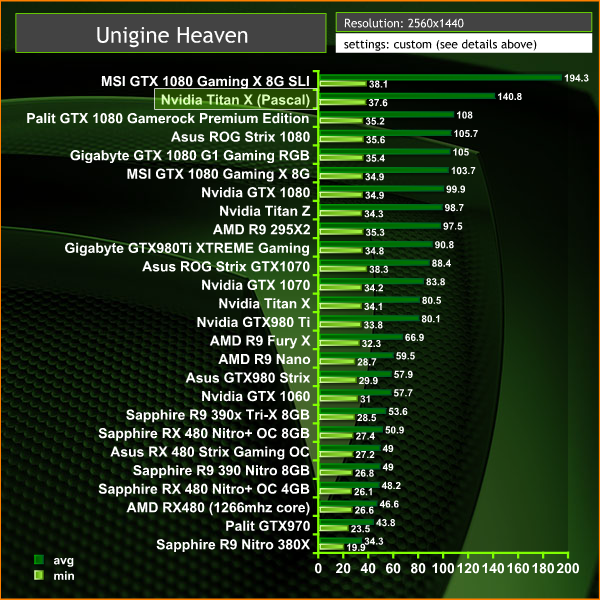Unigine provides an interesting way to test hardware. It can be easily adapted to various projects due to its elaborated software design and flexible toolset. A lot of their customers claim that they have never seen such extremely-effective code, which is so easy to understand.
Heaven Benchmark is a DirectX 11 GPU benchmark based on advanced Unigine engine from Unigine Corp. It reveals the enchanting magic of floating islands with a tiny village hidden in the cloudy skies. Interactive mode provides emerging experience of exploring the intricate world of steampunk. Efficient and well-architected framework makes Unigine highly scalable:
- Multiple API (DirectX 9 / DirectX 10 / DirectX 11 / OpenGL) render
- Cross-platform: MS Windows (XP, Vista, Windows 7) / Linux
- Full support of 32bit and 64bit systems
- Multicore CPU support
- Little / big endian support (ready for game consoles)
- Powerful C++ API
- Comprehensive performance profiling system
- Flexible XML-based data structures

We test at 2560×1440 with quality setting at ULTRA, Tessellation at NORMAL, and Anti-Aliasing at x2.
The Titan X is showing staggering tessellation performance. It is averaging more than 30 frames per second more than the overclocked Palit GTX 1080 GameRock Premium Edition – the fastest GTX1080 we have tested so far.
 KitGuru KitGuru.net – Tech News | Hardware News | Hardware Reviews | IOS | Mobile | Gaming | Graphics Cards
KitGuru KitGuru.net – Tech News | Hardware News | Hardware Reviews | IOS | Mobile | Gaming | Graphics Cards





I may be inclined to getting two 1080’s before I ever get a Titan. o,O
Clocks on your overclock seem a bit conservative – I’ve managed to hold a stable +235 core / 675 memory on both cards, giving me a base clock of 1655 and boost to 1770, with a memory clock of 1420, giving me 11300 effective.
Final boost with their boost 3.0 puts me in the 2150-2180 core clock range. Can’t wait to stick waterblocks on them.
and take the wife for supper , damn! 😉
the joys of the silicon lottery I am afraid. I have recently got another Titan X, and it overclocks quite a bit higher.
Yeah it seems I’ve gotten lucky – really lucky in fact, over the last few years. These tx-p’s of mine both top out near 2200 core / 11500 mem, my previous tx-maxwell’s could boost to a shade over 1550 core, and my 5960x can sustain 5.1ghz across all cores @ 1.42v, and I can push a single core to 5.6GHz. Feels like I get danmed lucky, a lot.
Waterblocks for the tx-p’s have become a more complicated problem though – I was planning on going with EKWB for the setup, but it seems the nvidia HB sli bridge the pascal cards use won’t fit with their pascal blocks, so I’ll need another solution there.
It’s kind of crazy to think that if you notice, it took in most cases until the Pascal Titan X and in others the 1080 to beat the 295×2 in a lot of benchmarks. Kind of neat that even if you bought the 295×2 at full retail of $1500USD (in the states) in took two years, a node shrink from 28nm to 16nm, and a Video Card costing $1200 to beat it in a lot of cases.
Are they not benchmarking Doom in Vulkan?
It’s neat that a single card with only around 70% of the shader cores can be equal in performance and consume half the power.
The 295×2 was fast no doubt about it, but by no means was it particularly impressive. Hot as hell, and needed a beastly power supply to feed it. And thats without overclocking.